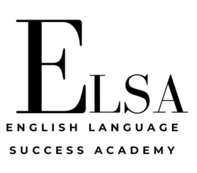Whether you’re a student embarking on your first research paper or a seasoned scholar preparing a journal article, understanding the nuances of academic writing structure and style is crucial. This article delves into the key components that make academic writing effective, focusing on thesis statements, argumentation, paragraph structure, and the appropriate use of language in scholarly contexts.
Thesis Statements and Argumentation: The Backbone of Academic Writing
At the heart of any academic piece lies the thesis statement—a concise, arguable claim that encapsulates the main idea of your work. A well-crafted thesis statement serves as a roadmap for both the writer and the reader, providing direction and purpose to the entire piece.
Crafting an effective thesis statement involves:
1. Identifying a specific topic or question
2. Taking a clear stance or position
3. Providing a preview of the main points to be discussed
For example, consider this thesis statement: “Despite recent technological advancements, face-to-face communication remains superior to digital interactions in fostering empathy and building meaningful relationships, as evidenced by neurological studies, psychological research, and sociological observations.”
This thesis is specific, arguable, and provides a clear outline of the supporting points to come.
Once your thesis is established, the art of argumentation comes into play. Academic writing thrives on logical reasoning, evidence-based claims, and critical analysis. To build a strong argument:
1. Anticipate counterarguments and address them proactively
2. Use a variety of credible sources to support your claims
3. Maintain objectivity while presenting your perspective
4. Employ logical transitions between ideas to create a cohesive narrative
Remember, the goal is not just to state your position, but to convince your audience through well-reasoned arguments and robust evidence.
Paragraph Structure: Building Blocks of Academic Discourse
While the thesis statement provides the overall direction, well-structured paragraphs are the vehicles that carry your argument forward. Each paragraph should focus on a single idea that supports your thesis, following a clear structure:
1. Topic Sentence: Introduce the main idea of the paragraph
2. Supporting Evidence: Present facts, statistics, or expert opinions that bolster your point
3. Analysis: Explain how the evidence supports your argument
4. Transition: Connect the current paragraph to the next, maintaining flow
For instance:
Topic Sentence: “Face-to-face communication facilitates a deeper understanding of non-verbal cues, which are crucial for emotional intelligence and empathy.”
Supporting Evidence: “A study by the University of California found that individuals who engaged in regular face-to-face interactions showed a 20% increase in their ability to accurately interpret emotional states compared to those who primarily communicated digitally.”
Analysis: “This suggests that the physical presence of another person provides a richer set of emotional data, allowing for more nuanced interpretations and responses.”
Transition: “While non-verbal cues play a significant role, the quality of verbal exchanges in face-to-face settings also contributes to deeper connections.”
By following this structure, each paragraph becomes a mini-argument that builds upon the last, creating a cohesive and persuasive whole.
Formal vs. Informal Language in Academic Contexts
The tone and style of academic writing differ significantly from casual or creative writing. Academic discourse demands a formal, objective tone that prioritizes clarity and precision over flair or emotion. Here are key distinctions:
Formal Language:
– Uses third-person perspective (avoid “I” or “you”)
– Employs technical terminology appropriate to the field
– Avoids contractions, slang, and colloquialisms
– Prioritizes precise and unambiguous phrasing
Informal Language:
– May use first-person perspective
– Employs everyday language and expressions
– Includes contractions and colloquialisms
– May use more emotive or subjective language
Consider these examples:
Informal: “I think that social media is messing up how kids talk to each other.”
Formal: “Research suggests that social media usage correlates with a decline in face-to-face communication skills among adolescents.”
Informal: “It’s pretty obvious that people don’t read as much as they used to.”
Formal: “Studies indicate a downward trend in recreational reading habits among adults over the past decade.”
While formal language may seem stilted at first, it serves a crucial purpose in academic writing. It ensures that ideas are communicated clearly and objectively, allowing for rigorous peer review and scholarly debate.
Elsa Says:
Mastering academic writing is a journey that requires practice and attention to detail. By focusing on crafting strong thesis statements, building logical arguments, structuring paragraphs effectively, and using appropriate formal language, you can elevate your academic writing to new heights. Remember, the goal is not just to present information, but to contribute meaningfully to the academic discourse in your field. Embrace these principles, and watch your scholarly work flourish.



